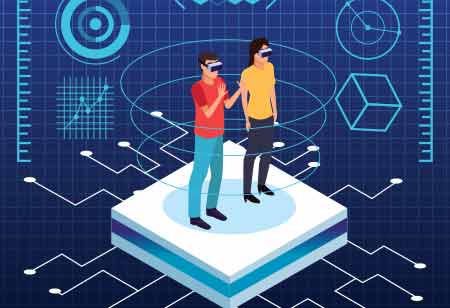THANK YOU FOR SUBSCRIBING

The Momentum Case for Geospatial - The Power of Where
Pravin Mathur, Department Director – Geospatial Information Systems, Clark Nexsen

 Pravin Mathur, Department Director – Geospatial Information Systems, Clark Nexsen
Pravin Mathur, Department Director – Geospatial Information Systems, Clark NexsenGeospatial technologies have come a long way from the mainframe to the smart phone. It all started with the quest to depict the three-dimensional Earth on a display screen, creating a breed of professionals who, over the course of time, have come to be perceived as mere map-makers. With advances in technology, the paradigm focus has shifted from just visualizations to modelling how things work and in real time. The penetration of location, in all forms of business and personal activity, has redefined the framework in which we view and use these technologies. Every sector be it agriculture, health, infrastructure, energy, citizen engagement, public services, retail etc, have embraced geospatial. Despite all advances, the value of geospatial has a wide spectrum for its understanding, levels of adoption and maturity.
Not at the Table: Brushing aside the multitude of opinions for the naming of this technology – Geographic Information Systems(GIS), GIS and Technology (GIST), Geospatial, Geomatics etc., in its essence it is all about data at the core, its integration and use as a new way of looking at business problems. Contextualization with streets, distances, buildings, traffic etc., helps create a real-world perspective that everyone can relate to. The geospatial lens brings into view patterns and linkages that tell a story. Being able to see what happened, where and when, leads to thinking into the causes and the why. Isn’t this business analytics? Geospatial technology and professionals facilitate these insights and yet they fail, largely, to have a seat at the table, to inject a location centric approach and decision making upfront.
"Geospatial professionals not only know their discipline but also act as translators of patterns that shed light on how to use location intelligence to arrive at business decisions"
In Step with Technology: Technology innovations and digital transformations have not only brought fundamental changes to the way business is conducted but also changed the flow. The overwhelming increase of tech in personal lives has set expectations for similar experience at work, public and private sectors, alike. Software vendors and solutions leaders like ESRI are developing and deploying holistic platforms and portals, mobile apps, and as-a-service solutions towards an anytime, anyplace, any device model of use. The road to the end user is being extended in the form of preconfigured workflows and seamless integrations to reduce transitions, handoffs. Machine Learning, Geo-blockchain, Artificial Intelligence and Internet of Things are making their way into the geospatial domain. Integration of the location platforms into core technology and solution offerings is happening - with Microsoft PowerBI, Adobe Creative Cloud, Autodesk, SAP, to name a few. The location platform is ready and resonating the momentum of technology.
The Workplace Climate: Organizations succeed when every business unit and their resources are in alignment with the corporate goals. It is widely said that 80% of an organization’s data has a location component. Geospatial information is foundational and bringing location data and analytics into the conversations promotes a deeper understanding within the organization and that begins to feed business strategy. So why do geospatial data and professionals have to be siloed and be placed low in the funding hierarchy. The C-suite has to shoulder some responsibility in the not-so-large scale inclusion of geospatial, all across. Leadership should be more invested and engaged for a more direct commitment and support. They need to make time to understand the data, technology and even test drive for a fuller appreciation.
Platforms and solution providers are tuned in to the technology drivers and trends. The end users demand an experience second to none and influence the markets like never before. Geospatial professionals not only know their discipline but also act as translators of patterns that shed light on how to use location intelligence to arrive at business decisions. They do not need to be siloed or kept at a distance. To prevent losing competitive advantage, geospatial professionals need to get a seat at the table at the very start of projects, business activity. That is the momentum case for geospatial, its inclusion and the realization of the Power of Where.
Read Also


















ON THE DECK